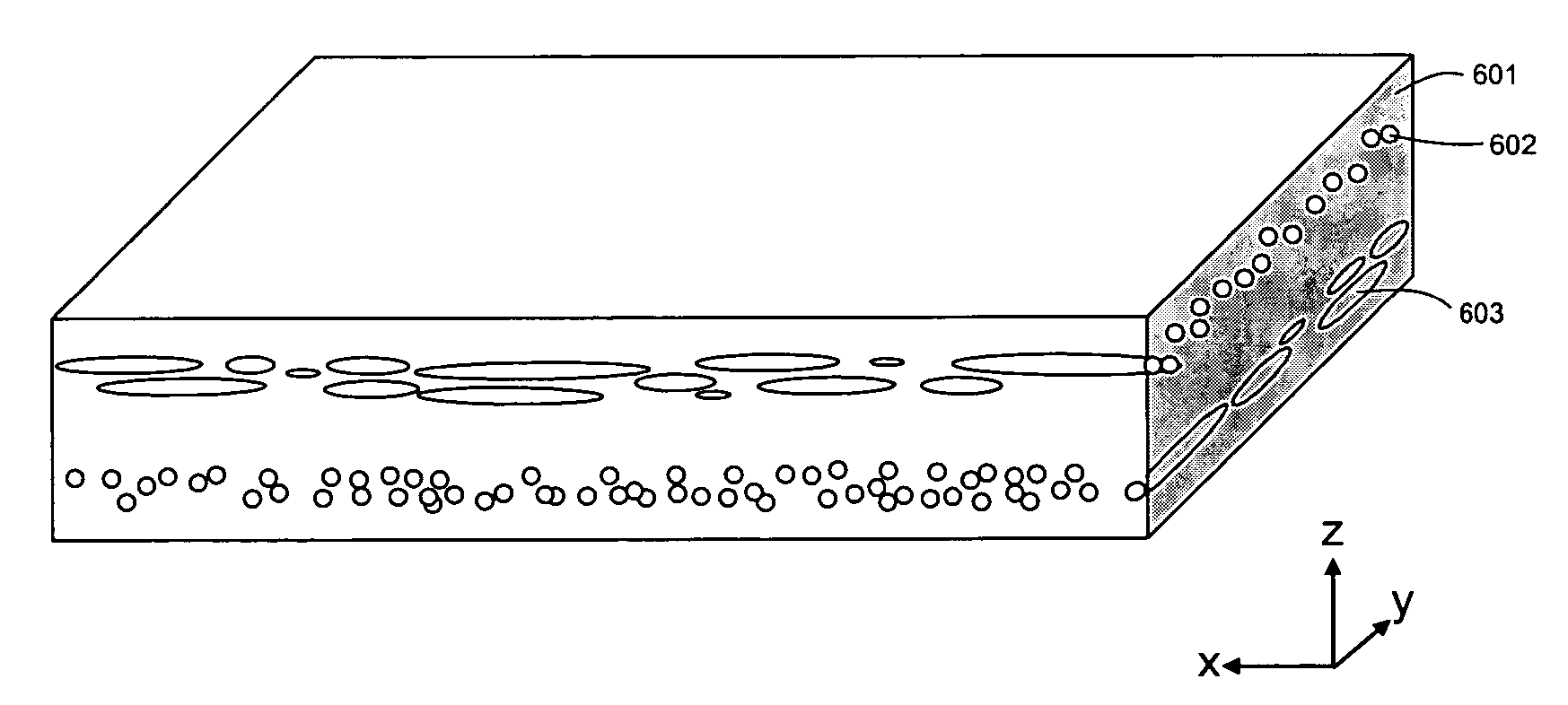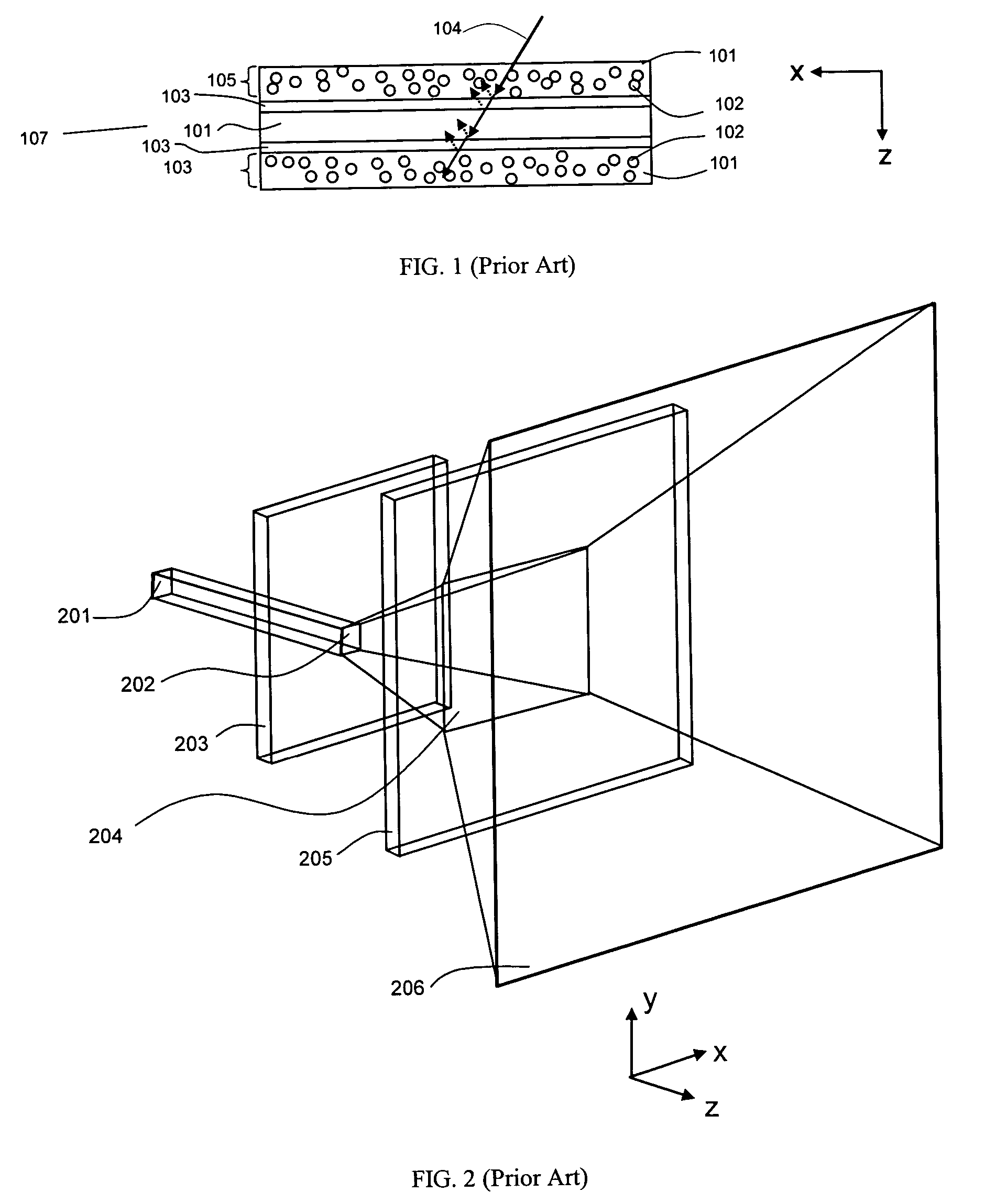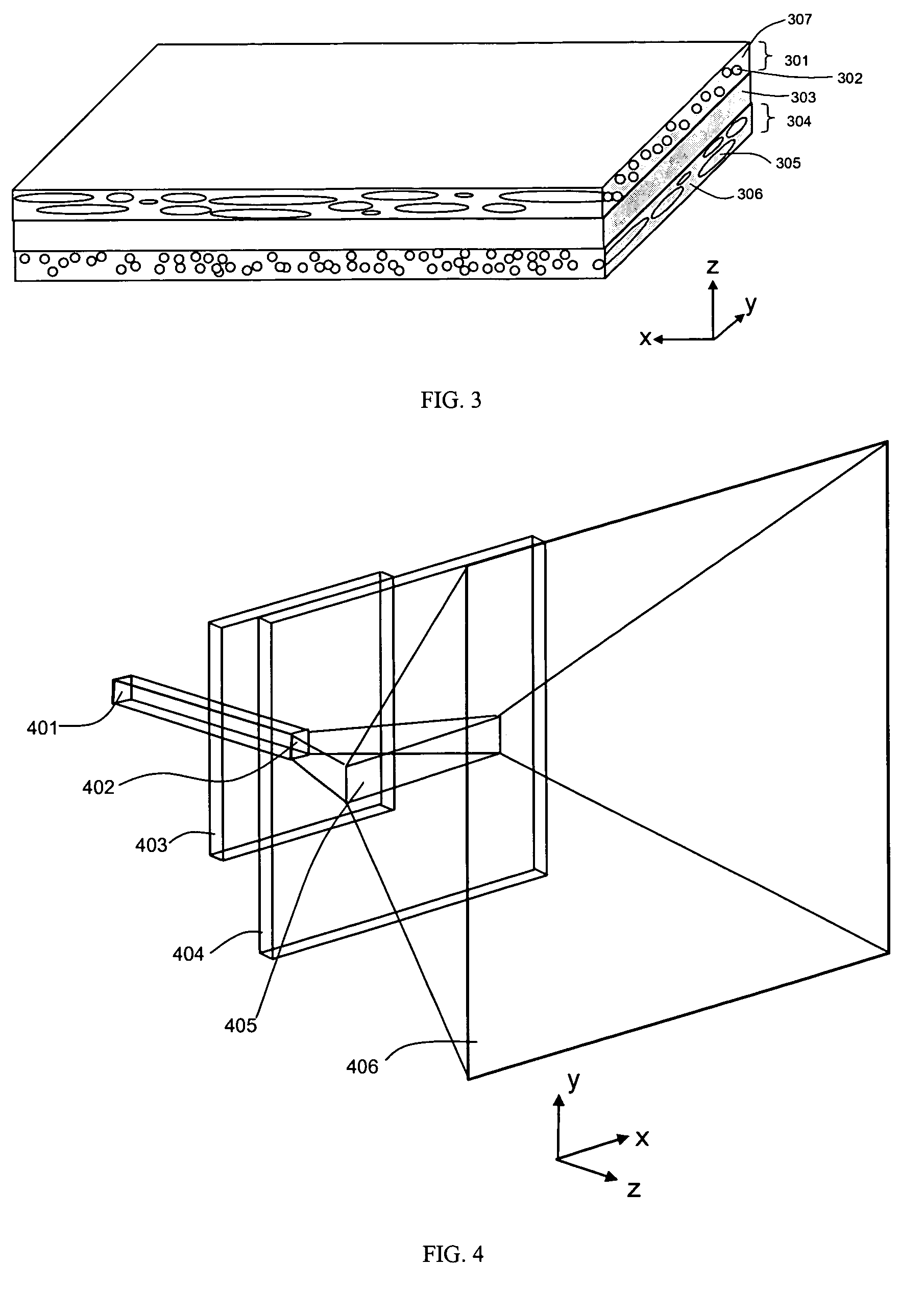Multi-region light scattering element
- Summary
- Abstract
- Description
- Claims
- Application Information
AI Technical Summary
Benefits of technology
Problems solved by technology
Method used
Image
Examples
example 1
[0125] A multi-region light scattering element, in accordance with the present invention, with asymmetric light scattering features, results in reduced speckle contrast and increased resolution relative to a multiple layer symmetric diffuser. By using two volumetric, asymmetric light scattering regions aligned perpendicular to each other and separated by a substantially non-scattering region, the light is scattered in the x-z plane and then in the y-z plane. The resolution is therefore significantly higher than two symmetric diffusers in both the x-z and y-z plane.
[0126] Sample S1a, a symmetric diffuser with a FWHM of 16 degrees by 16 degrees and gain of 19 was created by dispersing 30% by weight polyethylene particles of refractive index 1.51 within a matrix material of polyester of refractive index 1.568. A multi-layer symmetric scattering element was created by laminating two samples of this symmetric diffuser to either side of a 1.5 mm polycarbonate substrate with a refractive ...
example 2
[0129] Sample S2a, a symmetric diffuser with a FWHM of 29 degrees by 29 degrees and gain of 5.6 was created by dispersing 30% by weight polyethylene particles within a matrix material of polyester. A multi-layer symmetric scattering element was created by laminating two samples of this symmetric diffuser to either side of a 1.5 mm polycarbonate substrate using an index-matched pressure sensitive adhesive. The resulting multiple layer scattering screen (Sample S2b) had a light scattering intensity profile with a FWHM of 42 degrees by 42 degrees with a gain of 2.4. The resolution of this multiple layer scattering screen was measured by illuminating the USAF Test Pattern with collimated light. The screen is in close contact with the pattern such that the horizontal and vertical resolution bars are seen on the screen. On the opposite side of the screen from the diffuser was a CCD camera attached to microscope. Images of the horizontal and vertical line patterns were captured by a comput...
example 3
[0132] A projection screen, in accordance with the present invention, can be produced to have reduced speckle. An asymmetric diffuser with a FWHM of 33 degrees by 6 degrees and gain of 30 was created by dispersing 30% by weight polyethylene particles within a matrix material of polyester and stretching the material as described in U.S. Pat. No. 5,932,342. A multi-region asymmetric scattering element can be created by laminating two samples of this asymmetric diffuser with their major axes of diffusion oriented perpendicular to each other to either side of a 1.5 mm acrylic substrate containing dispersed birefringent mica particles. The resulting diffuser will have an increased resolution and reduced speckle contrast relative to a comparable multilayer symmetric diffuser.
PUM
 Login to View More
Login to View More Abstract
Description
Claims
Application Information
 Login to View More
Login to View More - R&D
- Intellectual Property
- Life Sciences
- Materials
- Tech Scout
- Unparalleled Data Quality
- Higher Quality Content
- 60% Fewer Hallucinations
Browse by: Latest US Patents, China's latest patents, Technical Efficacy Thesaurus, Application Domain, Technology Topic, Popular Technical Reports.
© 2025 PatSnap. All rights reserved.Legal|Privacy policy|Modern Slavery Act Transparency Statement|Sitemap|About US| Contact US: help@patsnap.com



